Customer Magazine
CBS
1965 -> today
Welcome to the CAMAG Bibliography Service (CBS), your premier source for the latest advancements in High-Performance Thin-Layer Chromatography. Each CBS magazine provides valuable insights into recent applications, case studies, and scientific research, covering a wide array of application fields.
CBS 135
Celebrating 60 Years of CAMAG Bibliography Service CBS
Featured applications:
- HPTLC screening of spirits and detection of glycerol
- Detection of illegal dyes in food and cosmetic products
- HPTLC fingerprinting for Kalanchoe species identification
- Lipidomics of Thlaspi arvense for biofuel production
Archived Issues of the CBS Magazine
CBS 134.
Detection of DEG and EG in syrup products

Featured applications:
- Tire particles assessment with HPTLC bioassays
- Machine learning for botanical identification
- Analysis of Flavonoids and Anthraquinones in Cassia
CBS 133.
Ensuring quality and authenticity in mushroom supplements
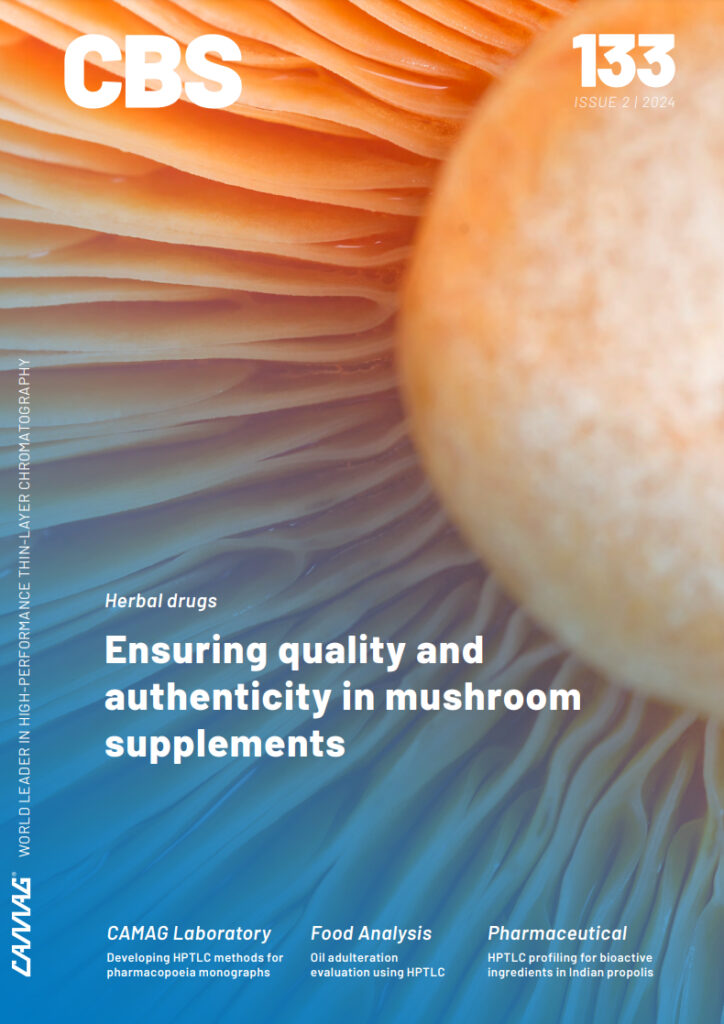
Featured applications:
- Developing HPTLC methods for pharmacopoeia monographs
- Oil adulteration evaluation using HPTLC
- HPTLC profiling for bioactive ingredients in Indian propolis
CBS 132.
Detection and identification of chemical warfare agents using HPTLC

Featured applications:
- Comparative HPTLC fingerprinting of saffron samples
- Implementation of Design of Experiments (DoE) software in method evaluation
- Gas phase control in the HPTLC PRO Module DEVELOPMENT
CBS 131.
Detection of paraffin oil in milk by HPTLC PRO

Featured applications:
- Inositol phosphate analysis by HPTLC
- HPTLC method for the identification of tributyrin in ButyraGen™
- Discrimination of Monteverdia ilicifolia leaf from its adulterants by HPTLC PRO
- HPTLC fingerprinting for quality assessment of Ashwagandha formulations
CBS 130.
Use of machine learning to predict the RF values
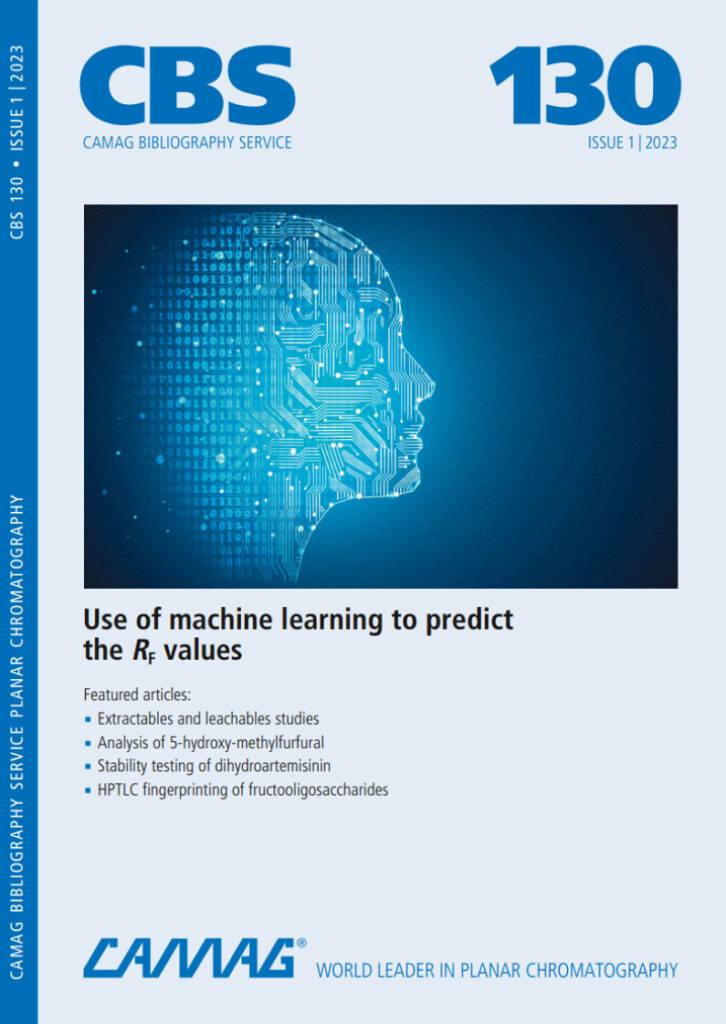
Featured applications:
- Extractable and leachable studies of pharmaceutical products packed in plastics
- Detection and quantification of 5-hydroxy-methylfurfural in honey
- Stability testing of dihydroartemisinin
- HPTLC-based fingerprinting of fructooligosaccharides
CBS 129.
Complementary Developing Solvents (CDS) – A new concept for routine analysis

Featured procedures and applications
- HPTLC routine analysis using complementary developing solvents
- Use of TLC, HPTLC, and HPTLC-MS during production and purification processes of active ingredients and their impurities
- Development and validation of an HPTLC-DPPH assay method for the acteoside content of Ribwort ipowder®
- HPTLC – a useful tool for the characterization of enzymes from plant lipid metabolism
CBS 128.
Ensuring product safety and quality with HPTLC
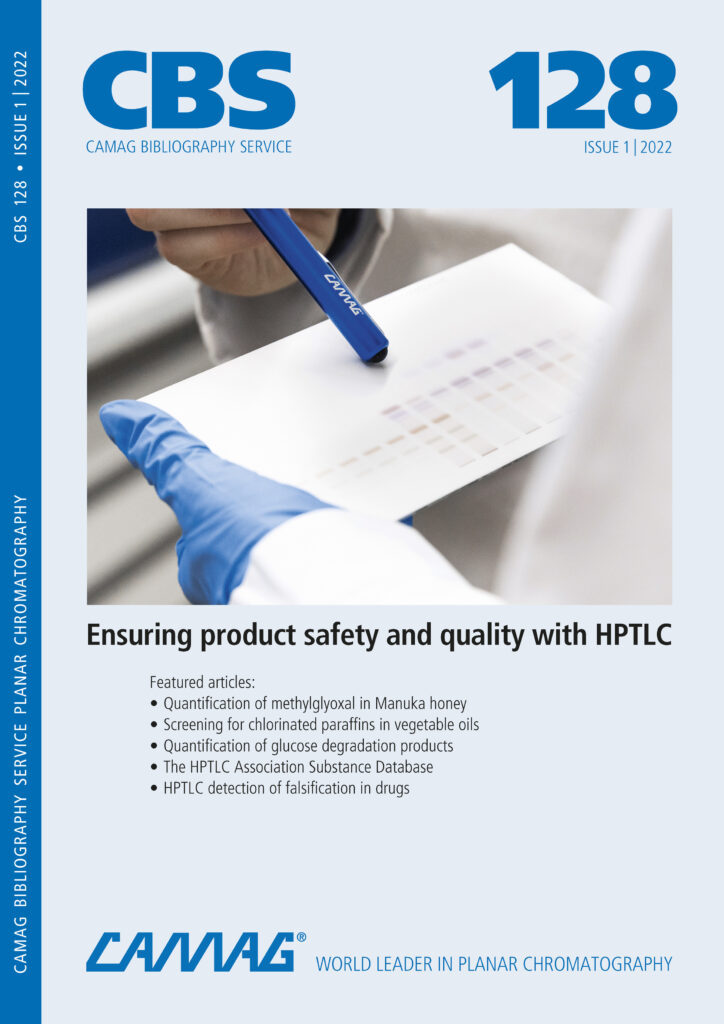
Featured procedures and applications
- Quantification of methylglyoxal in Manuka honey
- Screening for chlorinated paraffins in vegetable oils
- Quantification of glucose degradation products
- The HPTLC Association Substance Database
- HPTLC detection of falsification in drugs
CBS 127.
High-throughput analysis of aroma precursors in cocoa and coffee
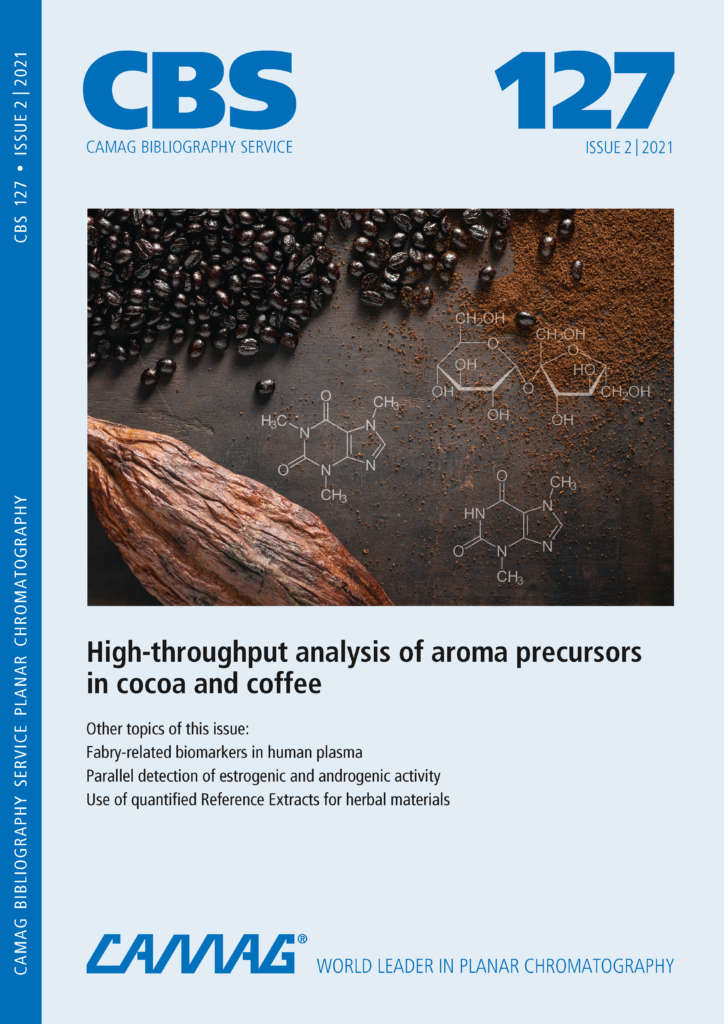
Featured procedures and applications
- High-throughput analysis of aroma precursors in cocoa and coffee
- Fabry-related biomarkers in human plasma
- Parallel detection of estrogenic and androgenic activity
- Use of quantified Reference Extracts for herbal materials
CBS 126.
Special issue – Analysis of honey by HPTLC
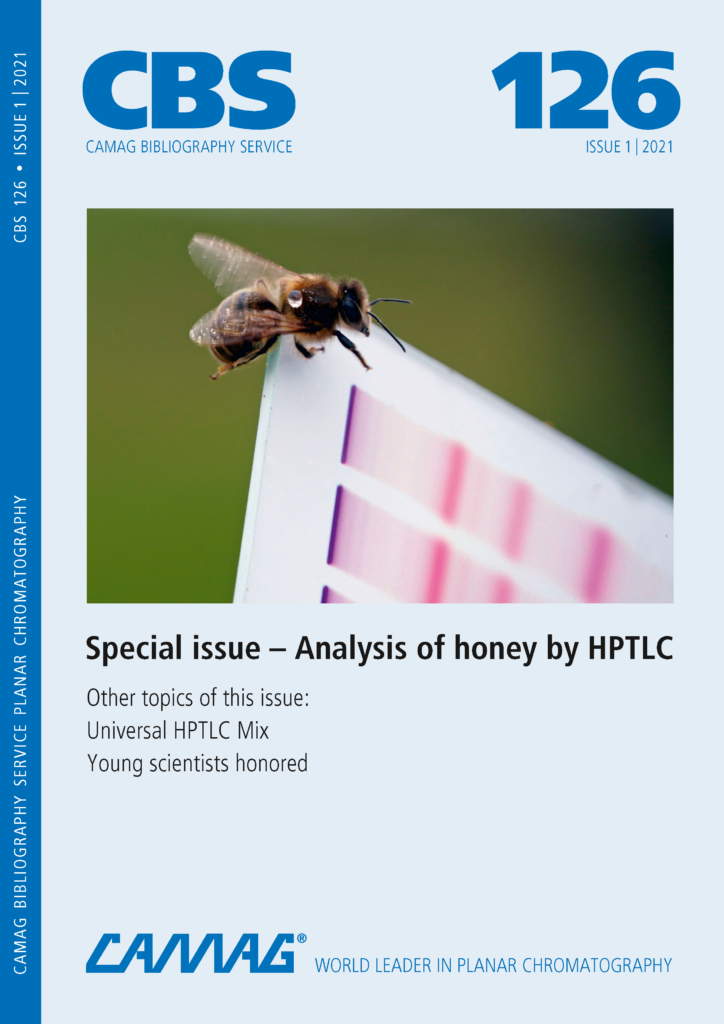
Featured procedures and applications
- Analysis of honey by HPTLC
- Universal HPTLC Mix: the rise of a novel concept for system suitability test
- Fast analysis of sugars in honey by using the HPTLC PRO System
Need some help?
Enjoy faster, more accurate analyses, reduced costs, and improved results. We are here to make it happen
